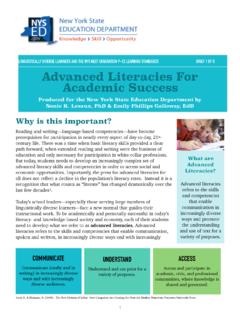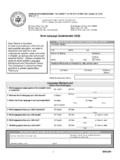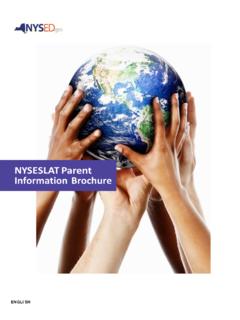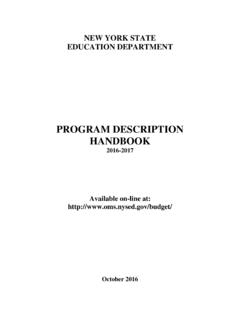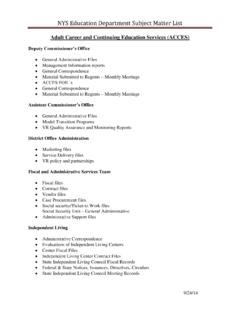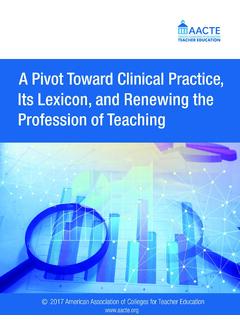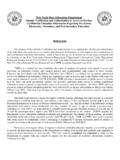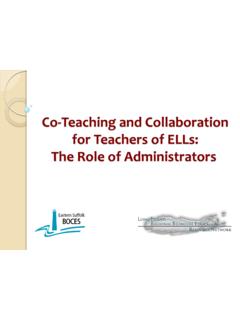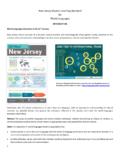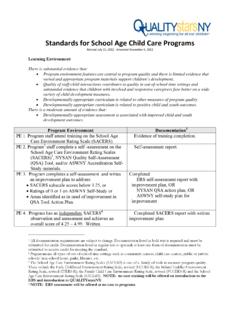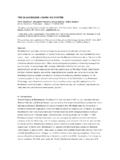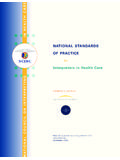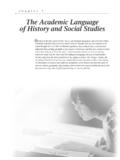Transcription of Learning Standards for Languages Other Than …
1 Learning Standards for Languages Other than English Revised Edition April 1996 THE UNIVERSITY OF THE STATE OF NEW YORK Regents of The University Carl T. Hayden, Chancellor, , .. Elmira Louise P. Matteoni, Vice Chancellor, , , .. Bayside Jorge L. Batista, , .. Bronx J. Edward Meyer, , .. Chappaqua R. Carlos Carballada, Chancellor Emeritus, .. Rochester Norma Gluck, , .. New York Adelaide L. Sanford, , , .. Hollis Walter Cooper, , .. Rochester Diane O Neill McGivern, , , .. Staten Island Saul B. Cohen, , , Ph. D.. New Rochelle James C.
2 Dawson, , , , .. Peru Robert M. Bennett, , .. Tonawanda Robert M. Johnson, , .. Lloyd Harbor Peter M. Pryor, , , , .. Albany Anthony S. Bottar, , .. Syracuse Merryl H. Tisch, , ..New York President of The University and Commissioner of Education RICHARD P. MILLS Executive Deputy Commissioner of Education THOMAS E. SHELDON Deputy Commissioner for Elementary, Middle, Secondary, and Continuing Education JAMES A. KADAMUS Assistant Commissioner for Curriculum, Instruction, Assessment, and Innovation EDWARD T. LALOR Coordinator of Curriculum and Instruction ROSEANNE DEFABIO The State Education Department does not discriminate on the basis of age, color, religion, creed, disability, marital status, veteran status, national origin, race, gender or sexual orientation in its educational programs, services and activities.
3 Portions of this publication can be made available in a variety of formats, including braille, large print or audio tape, upon request. Inquiries concerning this policy of nondiscrimination should be directed to the Department s Office for Diversity, Ethics, and Access, Room 152, Education Building, Albany, NY 12234. CONTENTS Acknowledgments iv Introduction v Learning Standards FOR Languages Other than ENGLISH AT THREE LEVELS 1 SAMPLES OF STUDENT WORK RELATED TO THE Standards 21 iii Acknowledgments In addition to the people recognized in the Preliminary Draft Framework for Languages Other than English, we are grateful to the many teachers from throughout New York State who contributed samples of student work for possible inclusion in this revised edition.
4 Listed below are the names of those teachers whose samples appear in this document. Contributors: Michelle Bloom, Guilderland Janet Bowman, Ithaca Darlene Cardillo, Albany Kelly Casey, Albany Dolores Chimato, Hunter Jill Crooker, Pittsford Bonita Hogan, Buffalo Lucrezia Lindia, Eastchester Janine Manley, Potsdam Lorraine Miner, Saugerties Michele Pollard, Slingerlands Christine Rant, Guilderland Patricia Sacca, Albany Alfred Valentini, Utica Marie Wilson, Lancaster Reviewers: Alessio Evangelista, Rochester Jill Crooker, Pittsford Michelle Bloom, Guilderland Darlene Cardillo, Albany State Education Department.
5 Roseanne DeFabio Jan Christman Mary Pillsworth iv Introduction This revised edition of the Learning Standards for Languages Other than English incorporates changes to the content Standards and performance indicators based on extensive review by the public. It should be considered a working document; as educational practice improves, these Standards will continually be revised. New in this edition are samples of student work, along with teachers comments on the work. The examples are intended to provide some ideas of tasks that support attainment of the performance Standards .
6 They are not mod els of excellence. Rather, they vary in degree of achievement. Some are at the acceptable level; others are at a more proficient level. It is important to remember that these are just suggestions of ways that students can demonstrate progress toward achieving the Standards . The State Education Department will continue to collect and publish samples of student work. As teachers become more familiar with the Standards and students become more proficient in meeting them, the level of the performance Standards and content Standards will continue to rise.
7 Taken together, the content Standards and the performance Standards define the Learning Standards for students in Languages Other than English. The Board of Regents recognizes the diversity of students in New York State, including students with disabili ties, students with limited English proficiency, gifted students, and educationally disadvantaged students, and has made a strong commitment to integrating the education of all students into the total school program. The stan dards in the framework apply to all students, regardless of their experiential background, capabilities, develop mental and Learning differences, interests, or ambitions.
8 A classroom typically includes students with a wide range of abilities who may pursue multiple pathways to learn effectively, participate meaningfully, and work toward attaining the curricular Standards . Students with diverse Learning needs may need accommodations or adaptations of instructional strategies and materials to enhance their Learning and/or adjust for their Learning capabilities. A Note About Checkpoints Learning a language Other than English may begin at any time; therefore, performance Standards are keyed to checkpoints, which may be measured at any point in the K-12 continuum, instead of elementary, intermediate, or commencement levels, which have traditionally implied specific grade levels.
9 The achievement of Learning Standards at any checkpoint varies according to the age when students begin language study, the frequency and length of the lessons, the students previous experience with second language Learning , and their motivation. Checkpoint A is considered to be a way station en route to proficiency. Checkpoint B corresponds to the level of performance that all students should demonstrate in order to obtain a high school diploma. Checkpoint C proficiency corresponds to a more advanced level of performance that can be attained on an elective basis.
10 V vi Learning Standards for Languages OtherThan English at Three Levels Standard 1: Students will be able to use a language Other than English for communication. Standard 2: Students will develop cross-cultural skills and understandings. 1 Standard 1 Communication Skills Modern Languages Checkpoint A 1. Listening and speaking are primary communicative goals in modern language Learning . These skills are used for the purposes of socializing, providing and acquiring information, expressing personal feelings and opinions, and getting others to adopt a course of action.

